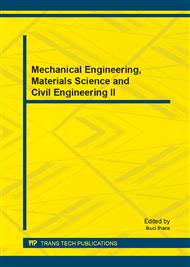p.376
p.381
p.387
p.392
p.396
p.400
p.404
p.408
p.412
Design Method of the Skull Restoration Based on User-Centered
Abstract:
The user needs during the skull restoration design were classified into functional requirement, physiological requirement and emotional requirement. The diagram of user-centered design in the skull prosthesis was drawn. The skull restoration formulas of titanium plate strength, compressive stiffness, bending stiffness and skull prosthesis manufacturing error were established. The hierarchy of the emotional design in the skull prosthesis was drawn. Through the analysis and research on the functional requirement, physiological requirement and emotional requirement, the user-centered design idea was shown, which had an important guiding significance for the development of the skull prosthesis design. Keywords: User-centered design, Skull restoration, Functional requirement, Physiological requirement, Emotional requirement
Info:
Periodical:
Pages:
396-399
Citation:
Online since:
December 2013
Authors:
Price:
Сopyright:
© 2014 Trans Tech Publications Ltd. All Rights Reserved
Share:
Citation:


